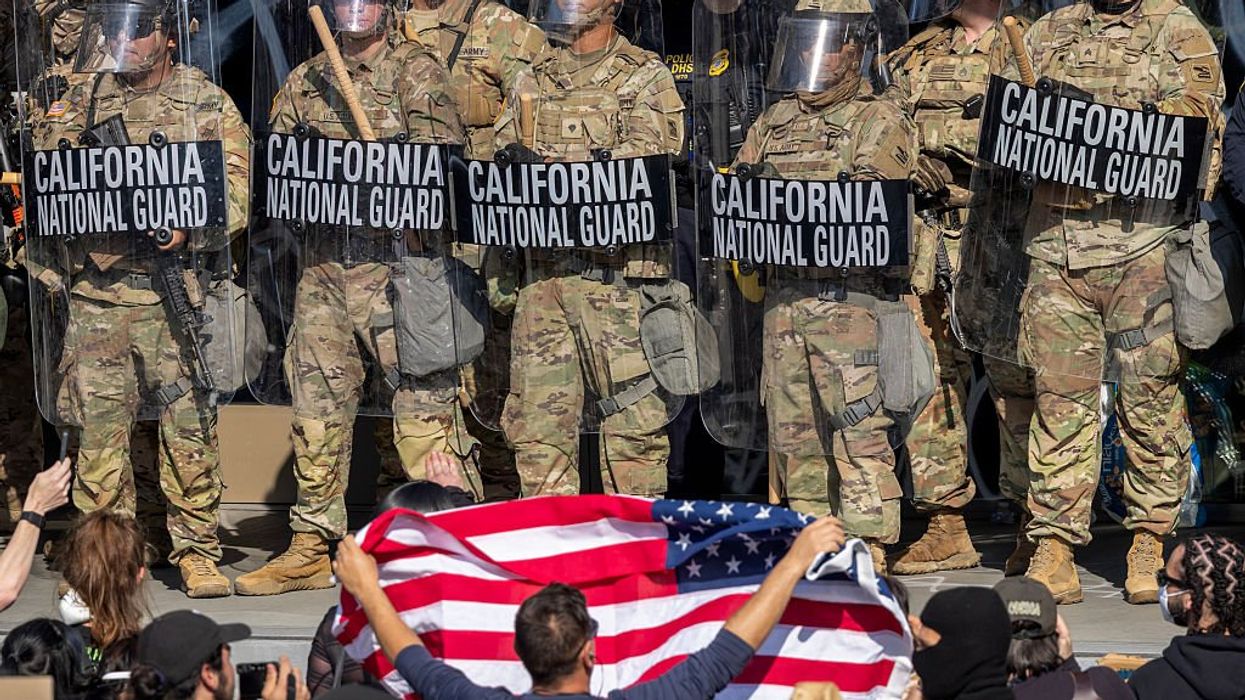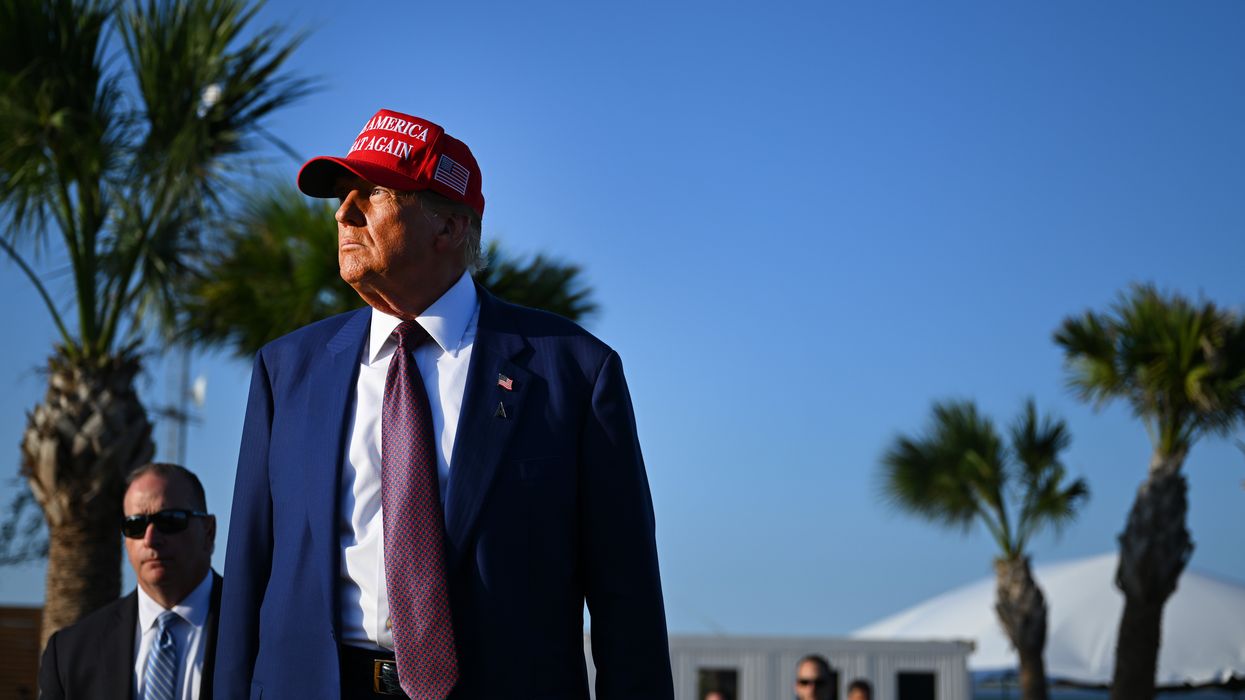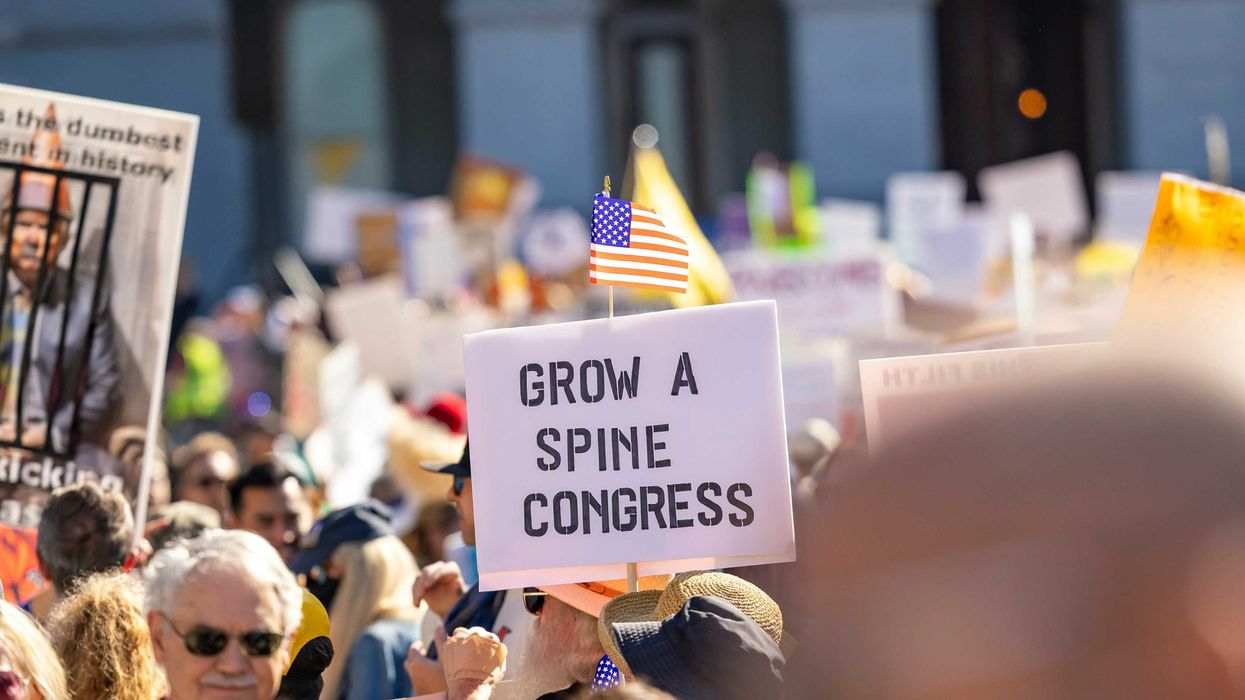President Trump’s military interventions in Los Angeles and Washington, D.C., foretell his plan for other cities.
The Washington Post recently reported on the Pentagon’s plans for a “quick reaction force” to deploy amid civil unrest. And, broad mobilization of the military on U.S. soil could happen under the Insurrection Act, which Trump has flirted with invoking. That rarely used Act allows troops to arrest and use force against civilians, which is otherwise prohibited by longstanding law and tradition.
These developments should sound alarms for all Americans. It is time to oppose such misuse of the military and emergency powers.
When an insurrectionist mob violently attacked the U.S. Capitol on January 6, 2021, then President Trump did not take emergency action to protect officials or federal property. The attack was a consequence of his call for protesters to march on the Capitol and “stop the steal”—part of the ongoing Big Lie campaign, denying his legitimate loss of the 2020 election. He is deviating from the truth again, this time to declare states of emergency where none exist in order to deploy the National Guard, first in Los Angeles and now in Washington, D.C.
On August 11, 2025, President Trump “federalized” the D.C. police department and ordered the National Guard to send 800 troops to the city. That’s in addition to some 500 federal law enforcement officers directed to D.C. the week before.
D.C. authorities did not request federal intervention. Trump justified the occupation with the false claim that city authorities lost control of violent crime. The facts show otherwise. Yes, D.C. has a serious crime problem. However, violent crime in Washington, D.C., is down 26% compared with this time a year ago. Last year, with a 35% drop from 2023, the city recorded a 30-year low.
In Los Angeles’ case, Trump’s deployment of the National Guard and active duty military troops in June was done under the false premise that protests there constituted “a form of rebellion against the authority of the Government of the United States.”
While there had been peaceful demonstrations against ICE raids in L.A., fireworks, bottles, and other projectiles were thrown at ICE and L.A. police officers, and serious property damage occurred. However, there was not a rebellion. Local authorities were taking seemingly effective law enforcement actions and did not request federal assistance. In fact, they opposed the federal intervention.
Make no mistake, mobilizing the National Guard in L.A. and D.C. is a threat to other cities.
At his rambling August 11 press conference, Trump implied that New York, Chicago, Baltimore, and Oakland are among the cities on his list. The mayors of those cities are already opposing such federal military interventions. On August 12, Presidential Advisor Stephen Miller made clear on “X” that the attacks on “big blue cities” are part of an agenda, justified by the preposterous charge that “Democrats are trying to unravel civilization,” while “President Trump will save it.”
The issued presidential memoranda regarding L.A. and D.C. demonstrates both broad intent and overreach as local and state officials were bypassed and no clear “emergency” existed to justify their issuance.
The June 7, 2025, presidential memorandum used to send troops to Los Angeles is so vague that it could be invoked practically any time for deployments anywhere. Neither L.A. nor California is specifically mentioned. It allows the activation of other states’ National Guard for “military protective activities” that the secretary of defense determines “are reasonably necessary to ensure the protection and safety of Federal personnel and property.”
The August 11 presidential memorandum on D.C. parallels the June 7 document, stating:
“...I direct the Secretary of Defense to mobilize the District of Columbia National Guard and order members to active service, in such numbers as he deems necessary, to address the epidemic of crime in our Nation’s capital. The mobilization and duration of duty shall remain in effect until I determine that conditions of law and order have been restored in the District of Columbia. Further, I direct the Secretary of Defense to coordinate with State Governors and authorize the orders of any additional members of the National Guard to active service, as he deems necessary and appropriate, to augment this mission.”
As of August 16, it was announced that West Virginia, South Carolina, and Ohio were deploying hundreds of additional National Guard troops to D.C. In a further provocative escalation, the National Guard troops are to begin carrying weapons, even though no serious confrontations with them have taken place.
A president has broad discretion in deciding to declare a state of emergency, and once done, a president can employ more than 130 statutory emergency powers. The recent presidential memoranda set a precedent for unbridled interventions, sending National Guard and active military troops wherever the President claims an emergency exists. That applies even when governors object and to even use troops from other states.
To protect democratic governance, abuse of presidential emergency powers must be constrained by Congress and the courts and opposed by the public.
California is challenging the legality of the ongoing military intervention in L.A. In June, U.S. District Judge Charles Breyer issued an order restraining the deployment, but it was reversed on appeal. Judge Breyer conducted further hearings on August 13-15 on whether the troops’ activities have violated the 147-year old Posse Comitatus Act that blocks the military from civilian law enforcement. The outcome of the case will have national implications.
In D.C., the police are a focal point. Section 740 of the D.C. Home Rule Act allows a president, when “special conditions of an emergency nature exist,” to direct the mayor to order the D.C. police to provide federal “services.” Last week, Attorney General Pam Bondi wrongly attempted to place the police under direct federal command. D.C. challenged her order before District Judge Ana C. Reyes, and the order was rescinded under the judge’s watchful eye.
Under Section 740, the president’s initial D.C. police order may only last 30 days unless the U.S. House and Senate “enact into law a joint resolution” extending the time. Trump has stated that he will seek a long-term extension, which puts the onus on Congress to constrain that abuse.
More than 125 civil rights organizations are jointly calling on Congress to oppose federalizing D.C.’s police and deploying military forces for policing purposes in the U.S. Democrats have introduced a joint resolution to end the D.C. intervention because special emergency conditions do not exist.
The Limiting Emergency Powers Act of 2025, similarly to the ARTICLE ONE Act introduced in 2023, would place limits on presidential emergency powers, including requiring congressional approval for an emergency if it is to extend beyond 30 days. There is noteworthy bipartisan support for such measures. And groups like the Brennan Center for Justice and numerous other democracy advocacy organizations are working for related reforms, though reforms alone may be insufficient to constrain a president who acts beyond the law.
Members of the House and Senate need to hear forceful demands for the immediate enactment of effective limitations. Calling and texting them is in order. Related advocacy group reform efforts also deserve support. And, more than that is needed.
We may be headed to a circumstance where the military is deployed to one or more additional cities over local objections. L.A.’s mayor, police, and public managed to curtail violence without deadly confrontations between protesters and National Guard troops. That may not be the case in the future, and we cannot afford to play Russian roulette with military deployments.
That’s why the public should make clear that presidential deployment of troops to cities over the objections of state and local officials cannot be “normalized” and cannot stand.
Pat Merloe provides strategic advice to groups focused on democracy and trustworthy elections in the U.S. and internationally. He is a long-time resident of Washington, D.C.




















